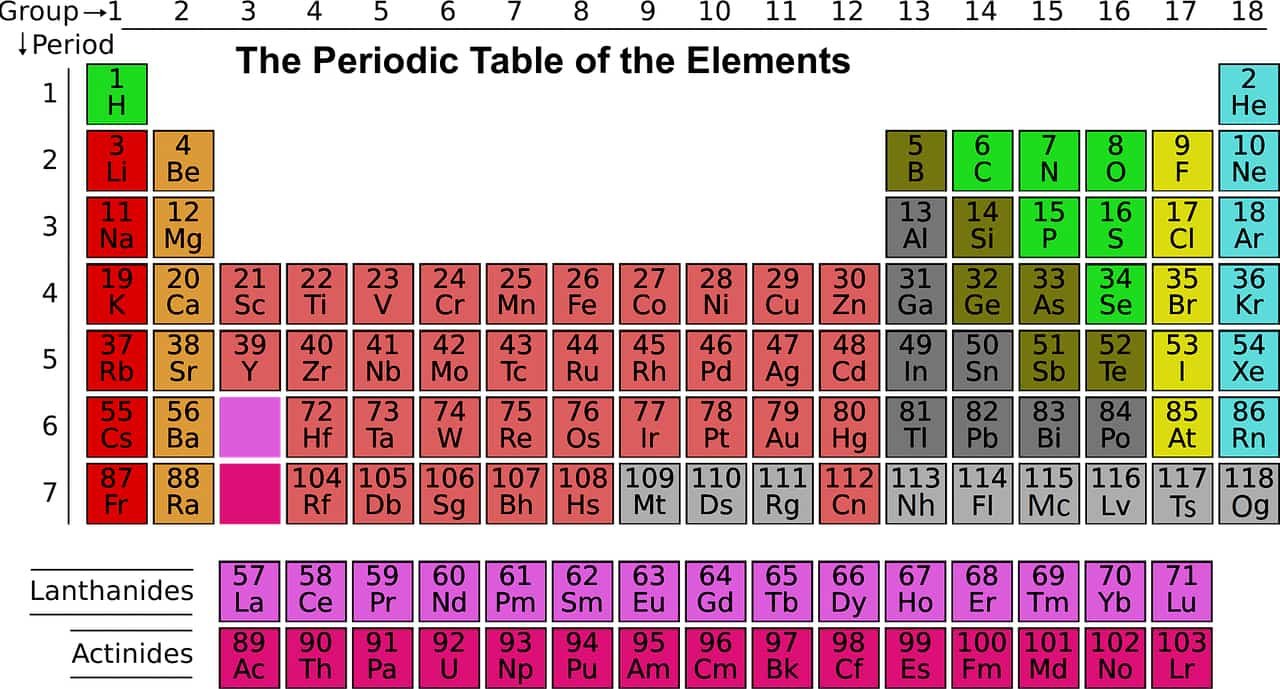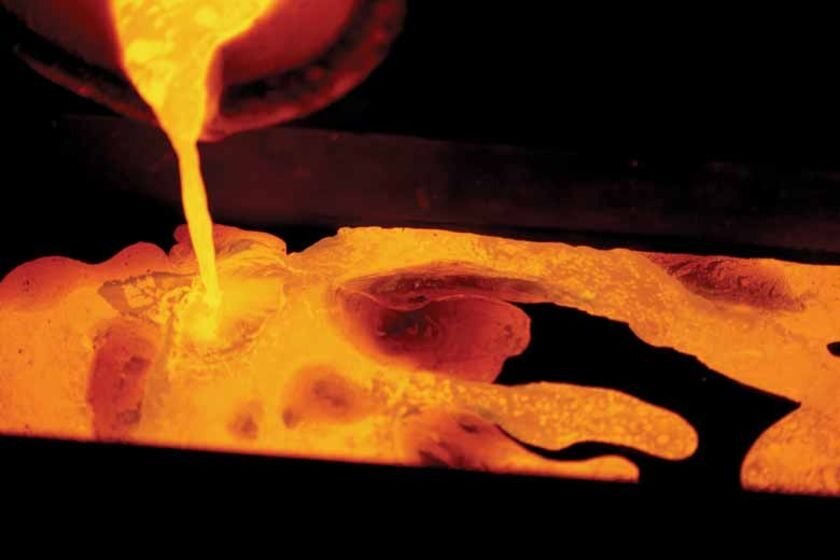Nitrogen is the chemical element with atomic number 7, symbol N (from Latin nitrogenium)
Nitrogen is the head of the group of pnictogens. In everyday language, nitrogen designates the simple body N2 (dinitrogen), the major constituent of the earth’s atmosphere, representing almost 4 / 5ths of air (78.06%, by volume). Nitrogen is the 34th element in the earth’s crust in order of importance.
The minerals containing nitrogen are mainly nitrates, in particular potassium nitrate KNO3 (constituent of saltpeter) or nitre, which was once used to make explosive powders, and sodium nitrate NaNO3 (constituent of saltpeter from Chile).
Nitrogen has many industrial uses. It is particularly widely used as a fertilizer in industrial agriculture (in the form of ammonium compounds), to the point where it is today its main use in the world, a use responsible for generalized pollution of the environment.
An element that looks like a Swiss army knife
Possessing a complex life cycle, nitrogen can be found in many forms and has different uses.
– In ammonia and nitrate, it is used as fertilizer for agriculture.
– Found in potassium nitrate, it also serves as a food preservative.
– In its liquid form, it is used as a refrigerant for biological samples or in molecular cooking.
– It can also be found in the tires of airliners or racing cars since it helps limit tire pressure losses.
Nitrogen has a wide range of uses but can also have negative consequences on health and the environment.
The risks associated with nitrogen
Found in nitrate, nitrogen is used as a fertilizer. Ingesting too much nitrate can have health consequences by reducing oxygen supply to cells, but it is especially for the environment that excessive use of nitrate is dangerous.
Indeed, the excess nitrate not absorbed by plants is dispersed by rains in seawater, rivers and groundwater and causes water pollution. Bacteria and toxic algae then develop and disrupt ecosystems. This is called the phenomenon of eutrophication.
In the longer term, it is considered that nitrogen could also lead to acidification of natural environments and therefore soils, and thus have negative consequences on agriculture.
Finally, when it encounters other pollutants in the air, nitrogen becomes a greenhouse gas and thus contributes to global warming.
Nitrogen oxide, a harmful derivative
Nitrogen oxide is a gas which can be hazardous to health. Thus, when nitrogen meets oxygen, or when a nitrogenous product oxidizes, emissions of this dangerous gas can occur at high temperatures.
This is the case, for example, when burning gasoline in a car. As such, road transport was responsible in 2012 for 54% of nitrogen oxide emissions. It is, moreover, the leading transmitter in mainland France.
Among its negative effects, nitrogen oxide can be irritating to the bronchi and cause breathing difficulties or pulmonary edema – especially in asthmatics or other frail people.
Applications / uses
Examples of uses of the molecule in industry and health
Aeronautics
Is used for heat treatment, welding or for laser cutting. Tires inflated with nitrogen have an extended life.
Automotive
Is used for heat treatment, welding or for laser cutting. It is also used in the production of auto parts by gas assisted injection molding process. Tires inflated with nitrogen have an extended life.
Chemistry
Is used directly in chemical processes as a carrier gas or fluidization agent, or for temperature control and the preparation of catalysts. It is also involved in several processes at petrochemical sites: inerting, drying, purging, mixing, etc.
Electronic components
Nitrogen allows the inerting of the atmosphere in order to avoid any oxidation phenomenon during the wave or reflow soldering process. Nitrogen is used as a carrier gas for protection against impurities and oxidation during semiconductor production and welding. It provides an inert atmosphere suitable for the waiting phases during the production of material and for the wafer containers during their transport. Nitrogen allows the dilution of reactive by-products rejected during the manufacture of semiconductors, until the safety threshold is reached. Nitrogen is used to cool the wafers without contamination after treatment.
Food
It is used for cooling, freezing or controlling the temperature of foodstuffs. It allows temperature control during transport and distribution thanks to the indirect injection of liquid nitrogen. Nitrogen preserves and protects foodstuffs through Protective Atmosphere Packaging (MAP) by minimizing oxidation, microorganism development and packaging crushing. It is also used for the protection of liquid foods against oxidation through inerting, pressure transfer and deoxygenation.
Glass
When mixed with hydrogen, it creates a reducing atmosphere above the tin bath during glass production.
Hospital health
Medical device: it is used for cryo-dermatology and cryo-preservation. It is also a component of the gas mixture used during functional respiratory tests.
Laboratories and Research Center
It is a carrier gas for gas chromatography in the context of various analyzes and quality control in industrial and hospital environments. It is also a balance gas for the calibration of gas mixtures intended for the control of gaseous emissions and of working environment sensors. Nitrogen is used for purging, drying or inerting analyzers or chemical reactors (in gaseous or liquid form at low temperature).
Metal fabrication
It is used for heat treatment and laser cutting.
Metal foundry
It is used for inerting and mixing in many processes.
Oil & Gas
For storage tanks and pipes, it protects products and installations (inerting). It is also used in cleaning / pigging operations, pipe purging, cleaning and leak detection. For unbalanced boreholes, nitrogen is used for gas lift and fracturing.
Other
It is used in the heat treatment for various metals. It is a component of mixtures used in carbon dioxide lasers. It is also used for the pneumatic transport of flammable powdery materials (charcoal).
Pharma & Biotechnology
It is used for inerting, cryo-grinding, lyophilization, drying, liquid phase transfer of products or synthetic intermediates. It is also used for the cryo-condensation of gaseous effluents and for storage at low temperature.
Nitrogen in the periodic table
| Atomic number (Z) | 7 |
|---|---|
| Group | group 15 (pnictogens) |
| Period | period 2 |
| Block | p-block |
| Electron configuration | [He] 2s2 2p3 |
| Electrons per shell | 2, 5 |
Physical properties
| Physical properties | |
|---|---|
| Phase at STP | gas |
| Melting point | (N2) 63.23 K (−209.86 °C, −345.75 °F) |
| Boiling point | (N2) 77.355 K (−195.795 °C, −320.431 °F) |
| Density (at STP) | 1.2506 g/L at 0 °C, 1013 mbar |
| when liquid (at b.p.) | 0.808 g/cm3 |
| Triple point | 63.151 K, 12.52 kPa |
| Critical point | 126.21 K, 3.39 MPa |
| Heat of fusion | (N2) 0.72 kJ/mol |
| Heat of vaporisation | (N2) 5.57 kJ/mol |
| Molar heat capacity | (N2) 29.124 J/(mol·K) |
Vapour pressure
| P (Pa) | 1 | 10 | 100 | 1 k | 10 k | 100 k |
|---|---|---|---|---|---|---|
| at T (K) | 37 | 41 | 46 | 53 | 62 | 77 |
Atomic properties
| Atomic properties | |
|---|---|
| Oxidation states | −3, −2, −1, +1, +2, +3, +4, +5 (a strongly acidic oxide) |
| Electronegativity | Pauling scale: 3.04 |
| Ionisation energies |
|
| Covalent radius | 71±1 pm |
| Van der Waals radius | 155 pm |
Other properties
| Other properties | |
|---|---|
| Natural occurrence | primordial |
| Crystal structure | hexagonal |
| Speed of sound | 353 m/s (gas, at 27 °C) |
| Thermal conductivity | 25.83×10−3 W/(m·K) |
| Magnetic ordering | diamagnetic |
| CAS Number | 17778-88-0 7727-37-9 (N2) |
History
Nomenclature and origin
Antoine Lavoisier chose the name nitrogen, composed of a- (private) and the Greek radical ζωτ- (“living”) and which therefore means “deprived of life”, because unlike oxygen it does not maintain the animal life 6.
| History | |
|---|---|
| Discovery | Daniel Rutherford (1772) |
| Named by | Jean-Antoine Chaptal (1790) |
The origin of the symbol N is its Latin name nitrogenium which comes from the Greek nitron gennan, which means “saltpeter” (potassium nitrate). The English term nitrogen has retained this root to designate nitrogen, while the French term “nitrogen” is no longer used today.
Main isotopes of nitrogen
Nitrogen (N) has 16 known isotopes of mass number varying from 10 to 25, as well as a nuclear isomer, 11mN. Two of them are stable and present in nature, 14N and 15N, the first representing almost all of the nitrogen present (99.64%). They are widely used for isotopic studies, in particular of the nitrogen cycle1 and food webs.
| Main isotopes of nitrogen | |||||||||||||||||||||
|---|---|---|---|---|---|---|---|---|---|---|---|---|---|---|---|---|---|---|---|---|---|
| |||||||||||||||||||||
Periodic Table of Elements | Complete List of Chemical Elements by Group, Name, Symbol, Color and Type

Sources: PinterPandai, Nitrogen Foot Print
Photo credit: Cory Doctorow / Flickr
Phoro explanation: Liquid Nitrogen, PicoCon, Imperial College, London.


